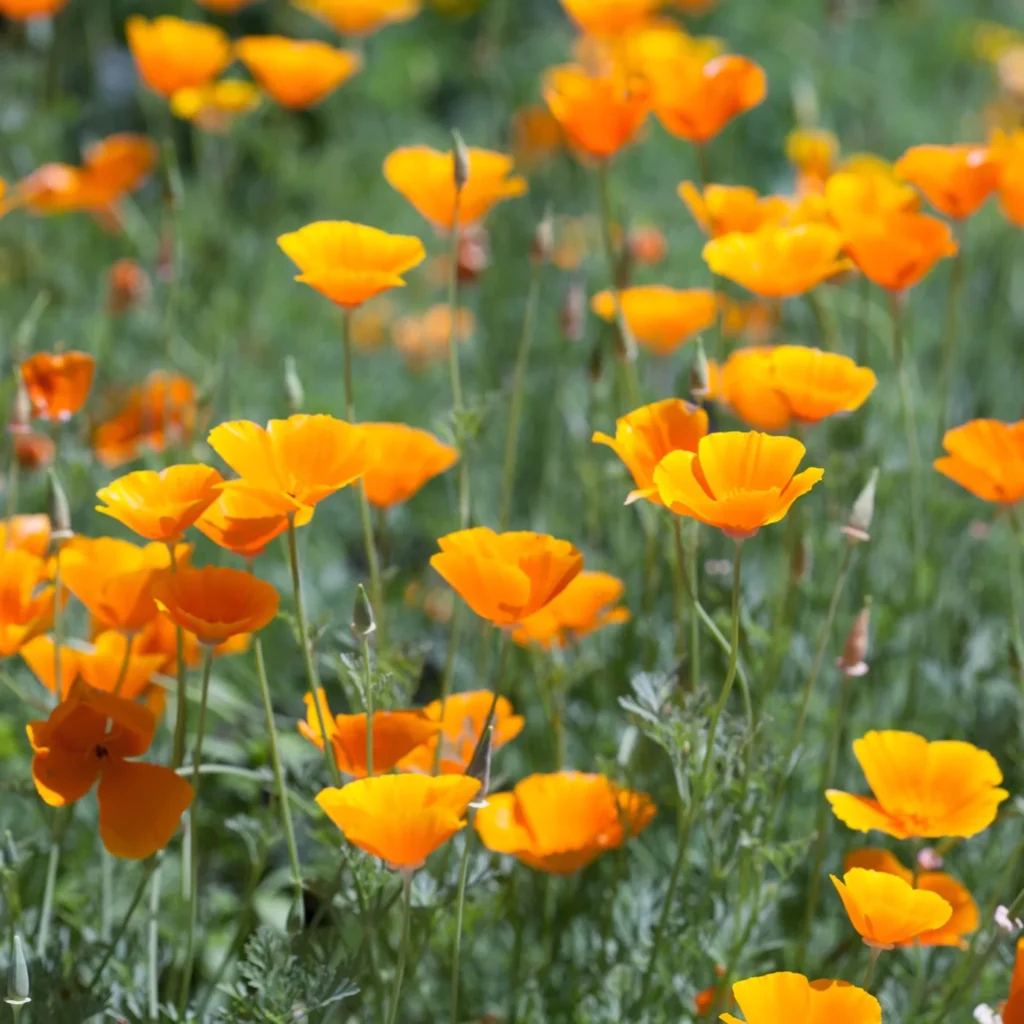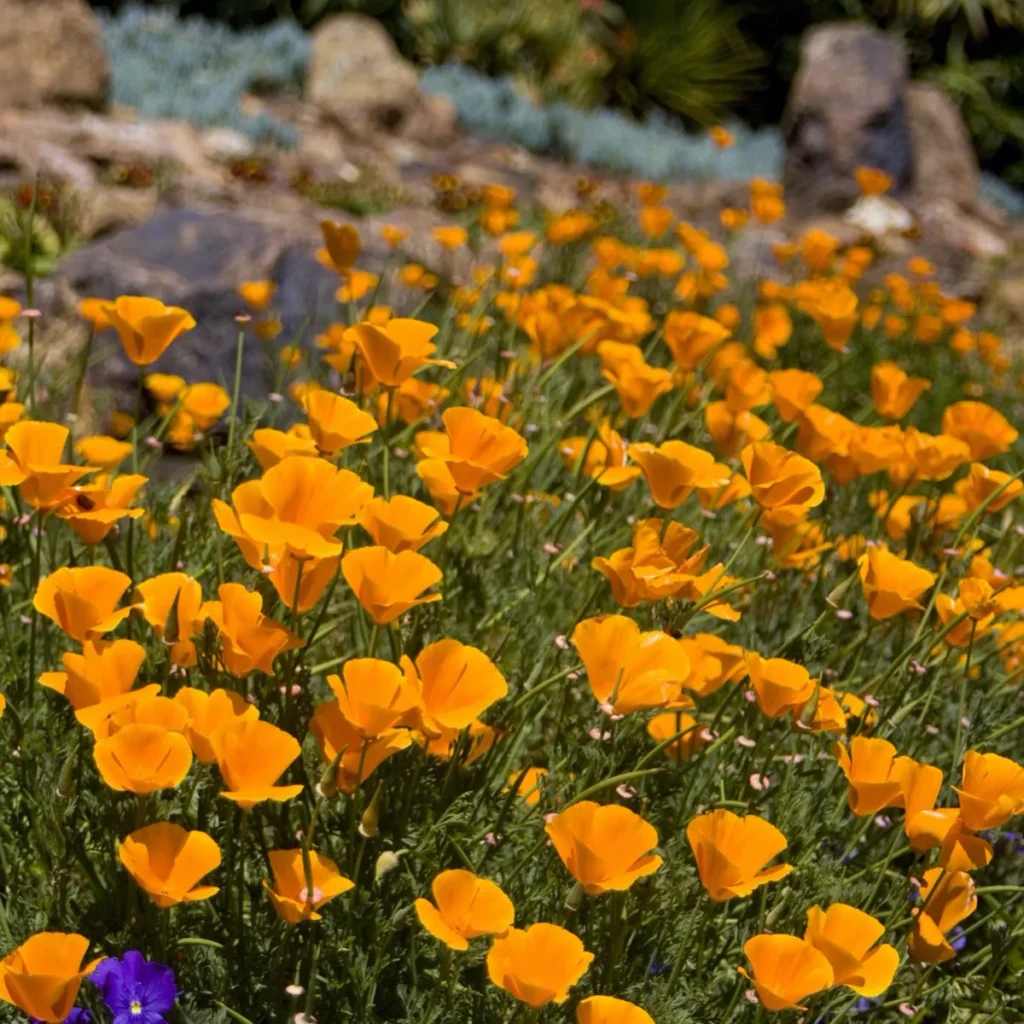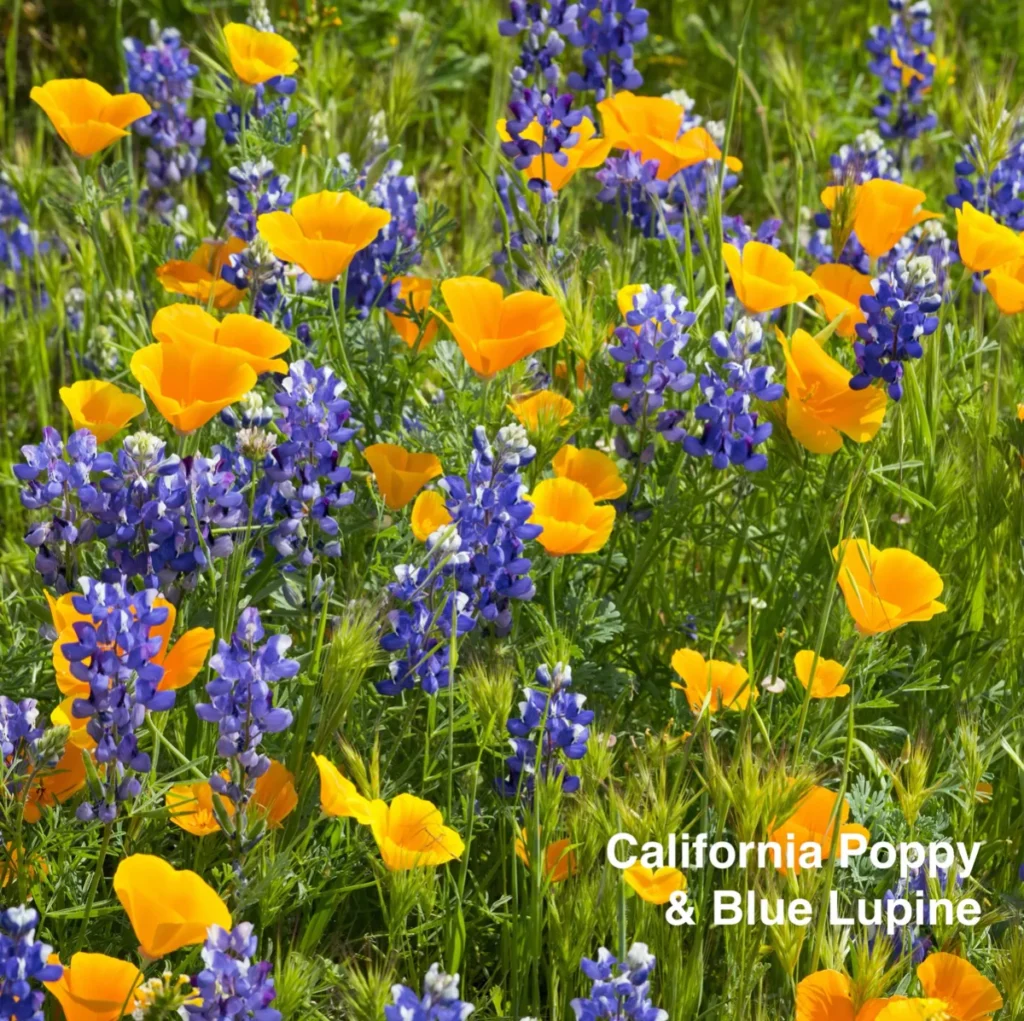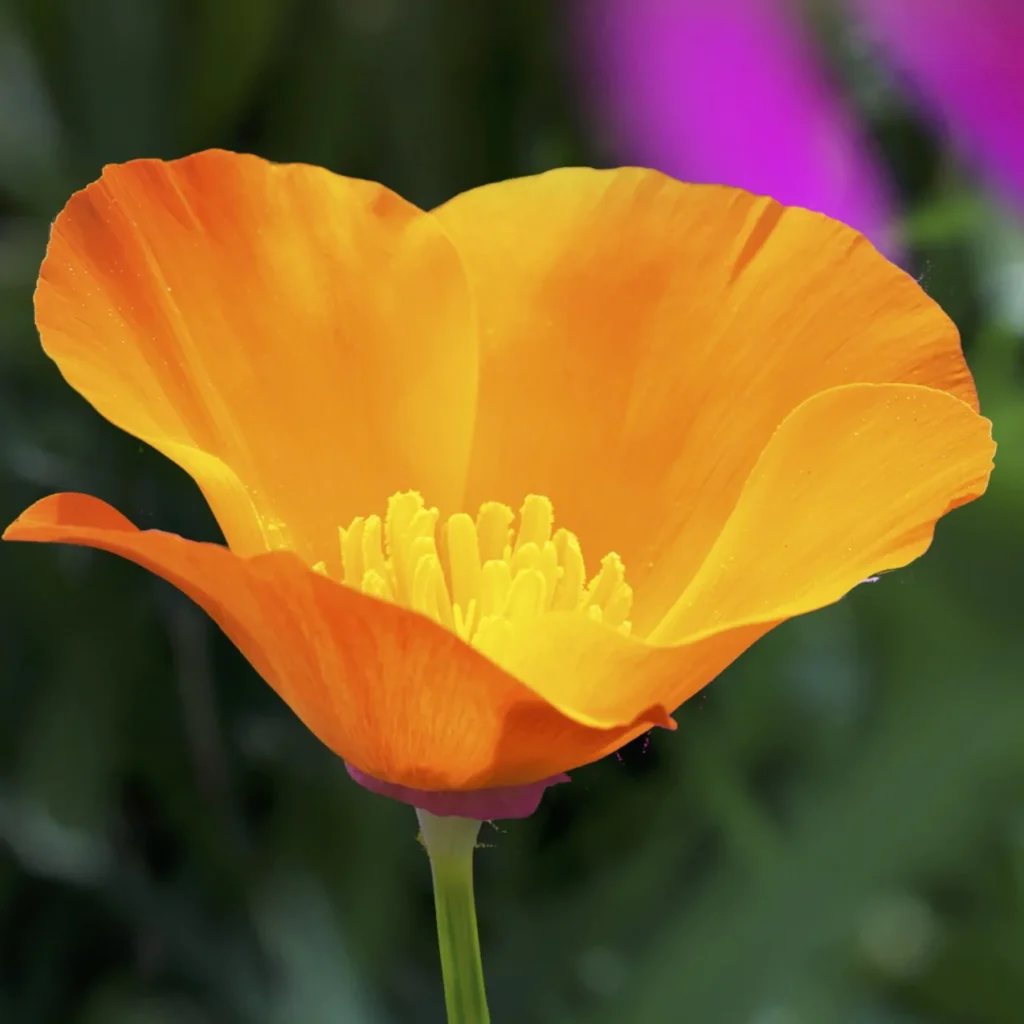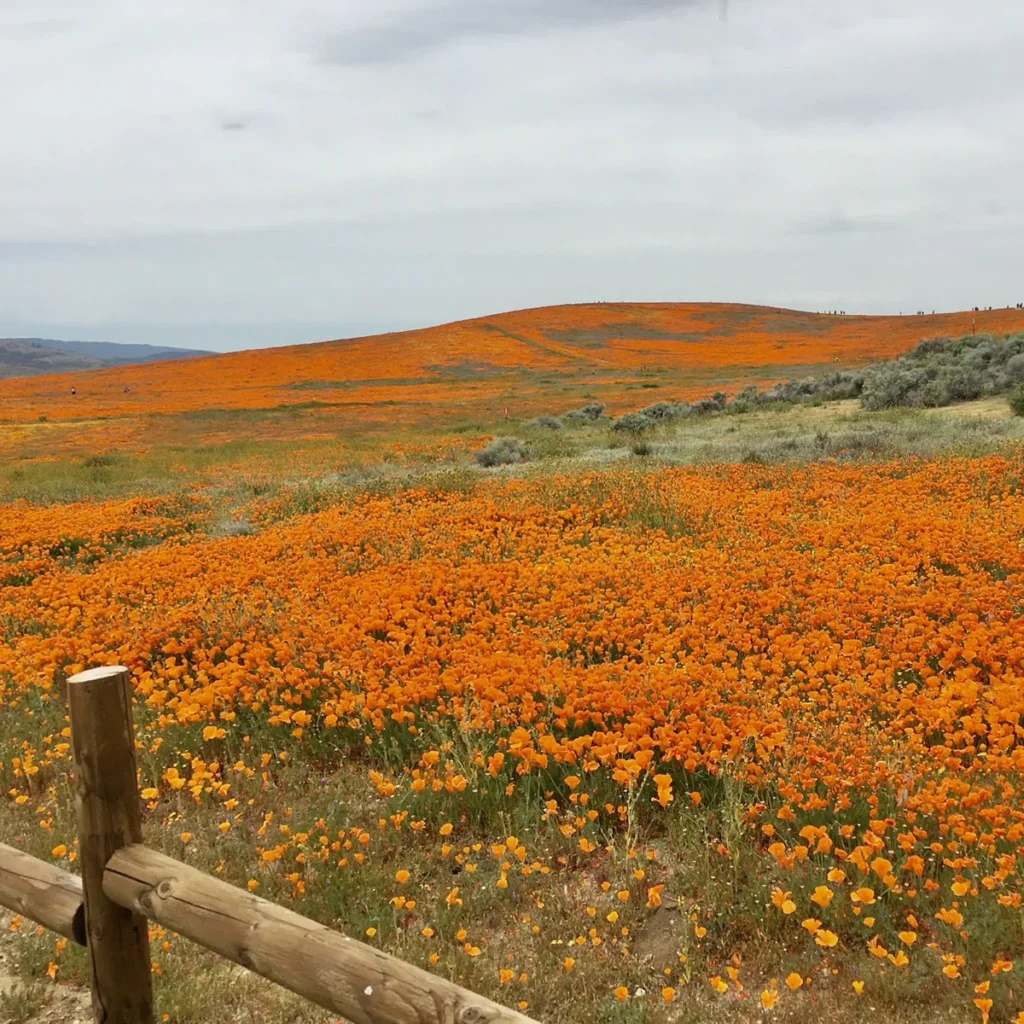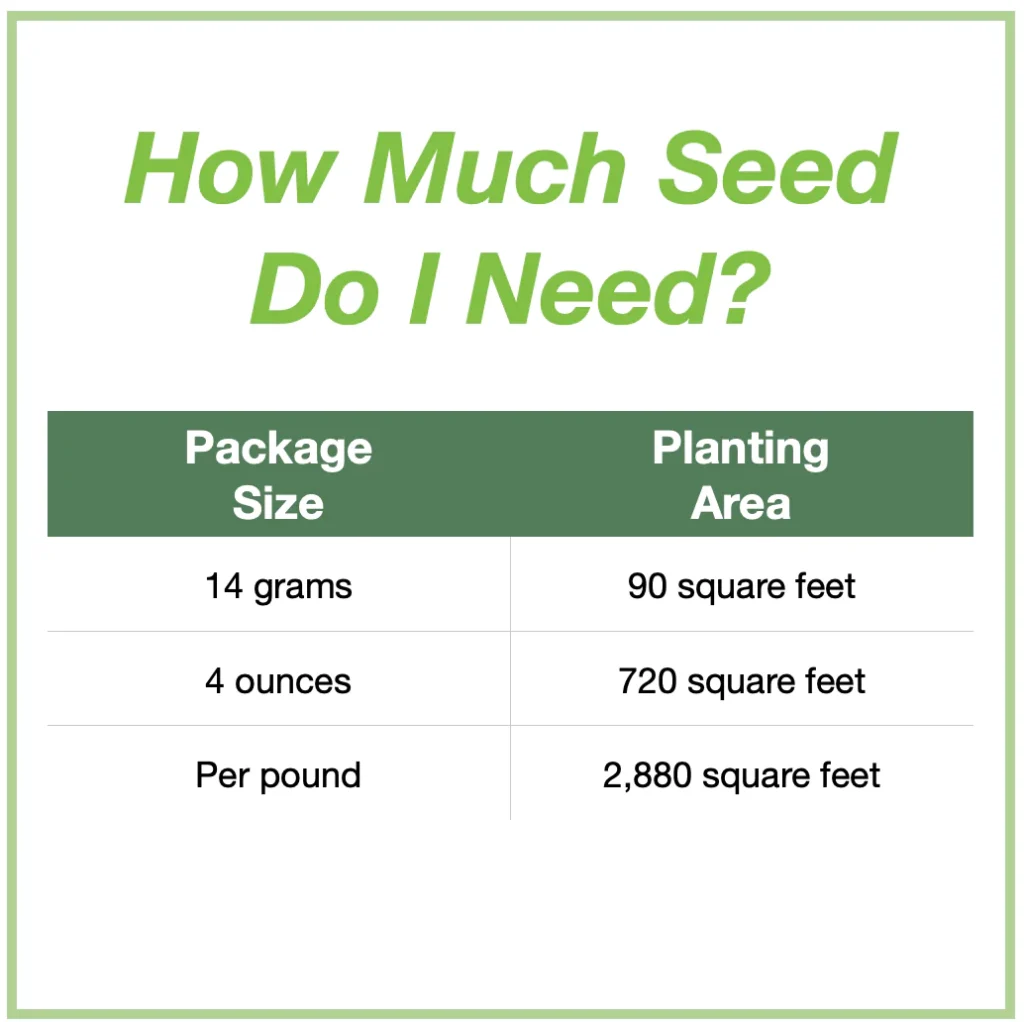[If you received the “Wildflower Mix”, click here for planting info. For the California Poppy Seeds, see below]
Received one of our free seed packets? Each packet contains about 1.25 grams of seed, enough to plant over eight sections of poppy flower that are one foot square (or nearly one square yard).
Here’s some more info on Eschscholzia californica, the California Poppy:
The name says “California” but this beauty will grow most anywhere. The vibrant orange, cup-like flowers add casual beauty along a fence line, en masse in a flower bed, or when naturalized on slopes or hillsides. A staple for erosion control mixtures, roadside plantings, and restoration projects, it’s great in rock gardens too. Tolerant of some filtered shade, it’s lovely under California oak trees.
During a light breeze, a large planting will have the flower heads gently swaying as a group. It attracts butterflies, honeybees, and other pollinators too! The fabulous display of color is a showstopper, but it is not for cut flower use because the flowers close at night.
California Poppy seeds are easy to grow and plants can readily reseed for next year – just like the famous California Poppy Fields in the Antelope Valley where super blooms are spectacular! (See photo above).
In the springtime, plants generally flower about 55 days after sowing the seed.
Native to the western United States, California Poppy is the state flower of California and is a member of Papaveraceae family.
A Brief History of California’s State Flower – The California Poppy
Found along the entire western coast of the United States, California Poppy grows as far north as Washington state and as far south as Mexico. It has also established itself in southern France, Australia and Chile, and can be grown as a garden flower in most areas of the U.S.
The flower is usually golden orange, and is referred to as “golden poppy,” hence its designation as the California (Golden State) flower. It was selected as the state flower by the California State Floral Society in December 1890, but the state legislature did not make the selection official until 1903. April 6 is designated as California Poppy Day.
Horticulturalists have produced many cultivars with a range of colors, blossoms and stem forms. However, these cultivars will typically not breed true on successive reseeding and will need to be replanted to see the cultivar’s unique features.
California Poppy is drought-tolerant, self-seeding, and easy to grow in gardens. It is best grown as an annual, in full sun and sandy, well-drained, poor soil. Under irrigation it can act as a perennial.
Interesting fact: The genus “Eschscholzia” is named after Johann Friedrich Gustav von Eschscholtz (1793-1831), a German naturalist and entomologist who was an early explorer of the Pacific region.
Also see this helpful information:
Technical Guide: Establishment and Care of Wildflowers
| Live seeds per ounce (approx 28 grams): | 12,500 |
| Seeding rate per ounce: | 180 sq ft |
| Regions: | Coastal, Valley, Foothill & Desert below 7,000 ft. |
| Native To: | Western U.S. |
| Life Cycle: | Annual |
| Exposure: | Full sun to part shade |
| Height (in): | 6-24 |
| Bloom Period: | Mar-Oct |
| Flower Color(s): | Orange, Yellow |
| Establishment: | Fast |
| Water Requirements: | Very Low |
| Wildlife: | Butterflies & other pollinators. Birds attracted to seeds. |
| Cultural Information: | Summer watering 1-2 times a month will prolong bloom and delay dormancy |
| Links to additional information and photos: | Stover Seed |
| Calphotos |
